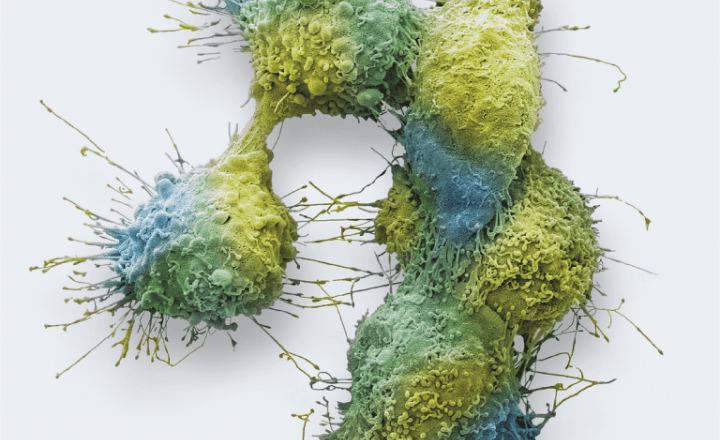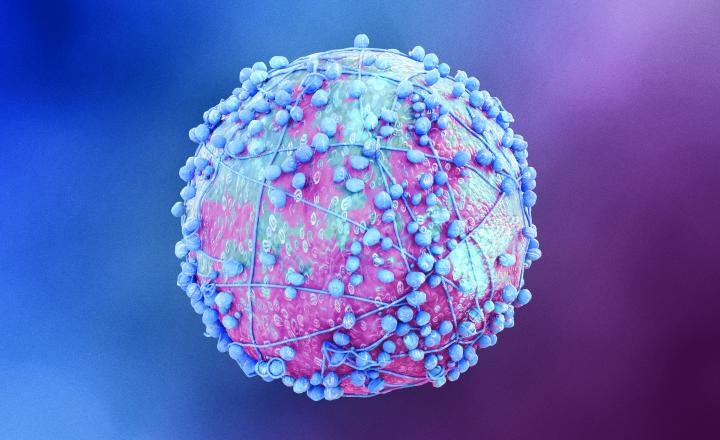What is HE4 (Human Epididymis protein 4)?
Ovarian cancer is the leading cause of death from gynecologic cancers in the United States and the fifth-leading cause of death from cancer in women.4 It accounts for 4% of all female cancers and 31% of cancers of the female genital organs. There are an estimated 22,000 new cases annually in the United States.1 Women who are postmenopausal are at the greatest risk for ovarian cancer.5 In their lifetimes, 1 in 69 women will develop ovarian cancer.6
There are 3 types of ovarian cancer—epithelial, germ cell, and stromal cell cancers. Epithelial accounts for more than 80% of the cases and forms in cells on the outer surface of the ovary. Germ cell cancers are caused by abnormal growth of the cells that form eggs. Stromal cell cancers are very rare and typically do not spread beyond the ovaries.7
Ovarian Cancer Symptoms
Ovarian cancer had long been thought of as a “silent killer” because symptoms would go unnoticed until the disease had already progressed and spread beyond the ovaries. However, recent studies have revealed that there are vague, and often overlooked, symptoms that can appear in earlier stages. These include:5
- Bloating
- Pelvic or abdominal pain
- Difficulty eating or feeling full quickly
- Urgent or frequent urination
- Faint but ongoing gastrointestinal upset (gas, nausea, indigestion)
- Unexplained fatigue and changes in bowel habits
Recognizing these symptoms in the early stages is critical. Currently, less than 20% of cases are diagnosed in the early stages and the 5-year survival rate is 20% to 30%, but when diagnosed in the early stages, the survival rate increases to 90% to 95%.7 A physician should be contacted if one or more of these symptoms persists for longer than 2 weeks.5
About HE4
HE4 was first identified as a specific protein of the human epididymis by Kirchoff et al in 1991:
-
Over-expression in ovarian tissue was observed by Schummer et al in 1999
-
The utility of HE4 as a serum biomarker in ovarian cancer was then described by Hellström et al in 2002
HE4 is expressed in the glandular epithelium of the reproductive tract, distal renal tubules and respiratory epithelium, however the highest serum levels of HE4 are found in epithelial and serous ovarian cancer and also endometrioid cancer.
HE4 has been found to be raised in ovarian cancer patients who did not have elevated CA125 levels and HE4 is not elevated in benign gynaecological conditions, e.g. pregnancy, menstruation, endometriosis.
HE4 is not elevated
- during pregnancy2
- in any phases of the menstruation cycle or with hormonal treatments3
- with hormonal stimulation during IVF treatment4
Importance of specific biomarker for management of gynecologic diseases
Cysts are a common occurrence, especially in premenopausal women, and the majority of cysts are benign:
- Up to 10% of women will have some form of surgery for ovarian mass5
- Preoperative differentiation between the benign and the malignant ovarian mass in the premenopausal woman is problematic6
References
- Parkin DM, Bray F, Ferlay J, Pisani P. Global cancer statistics, 2002. CA Cancer J Clin. 2005;55(2):74-108.
- McGowan L, Lesher LP, Norris HJ, Barnett M. Misstaging of ovarian cancer. Obstet Gynecol 1985;65(4):568-72.
-
Guidelines for referral to a gynecologic oncologist: rationale and benefits. The Society of Gynecologic Oncologists. Gynecol Oncol. 2000;78(3 Pt 2):S1-S13.
-
Greenlee RT, Murray T, Bolden S, Wingo PA. Cancer statistics, 2000. CA Cancer J Clin. 2000;50(1):7-33.
-
American College of Obstetricians and Gynecologists. ACOG Committee Opinion: number 280, December 2002. The role of the generalist obstetrician-gynecologist in the early detection of ovarian cancer. Obstet Gynecol. 2002;100(6):1413-1416.
-
Ovarian Cancer National Alliance. Ovarian cancer statistics. http://www.ovariancancer.org/about/statistics/
- Ovarian Cancer National Alliance. Risk factors. http://www.ovariancancer.org/about/risk-factors/
-
Moore RG, Brown AK, Miller CM, et al. The use of multiple novel serum tumor markers for the detection of ovarian carcinoma in patients with a pelvic mass. Gynecol Oncol. 2008;108(2):402-408.
-
CA125II™ Radioimmunoassay [Product insert], Fujirebio Diagnostics, Inc.
-
Ovarian Cancer National Alliance. Seeking the care of a gynecologic oncologist. http://www.ovariancancer.org/about/treatment/
-
Moore RG, Bast RC Jr. How do you distinguish a malignant pelvic mass from a benign pelvic mass? Imaging, biomarkers, or none of the above. J Clin Oncol. 2007;25(27):4159-4161.
-
NIH consensus conference. Ovarian cancer. Screening, treatment, and follow-up. NIH Consensus Development Panel on Ovarian Cancer. JAMA. 1995;273(6):491-497.
-
National Comprehensive Cancer Network. NCCN practice guidelines in oncology—v.1.2006.
-
Knapp RC, Jacobs I, Schwartz, P. Clinical perspectives on the use of the CA125 radioimmunoassay in ovarian cancer. Contemp Ob Gyn. 1996;41:99.
- Benedet JL, Bender H, Jones H 3rd, Ngan HY, Pecorelli S. FIGO staging classifications and clinical practice guidelines in the management of gynecologic cancers. FIGO Committee on Gynecologic Oncology. Int J Gynecol Obstet. 2000;70(2):209-262.
-
American Cancer Society. What are the key statistics about ovarian cancer? http://www.cancer.org/cancer/ovariancancer/detailedguide/ovarian-cancer-key-statistics
-
HE4 EIA [Package insert], Fujirebio Diagnostics, Inc.
-
Data on File [Pelvic mass algorithm report], Fujirebio Diagnostics, Inc.
-
Kenemans P, van Kamp GJ, Oehr P, Verstraeten RA. Heterologous double-determinant immunoradiometric assay CA125II: reliable second-generation immunoassay for determining CA125 in serum. Clin Chem. 1993;39(12):2509-2513.
-
Data on File [Clinical Data Report], Fujirebio Diagnostics, Inc.
-
Moore RG, Miller, MC, Disilverstro P; et al. Evaluation of the Diagnostic Accuracy of the Risk of Ovarian Malignancy Algorithm in Women With a Pelvic Mass. Obstetrics & Gynecology. 118(2, Part 1):280-288, August 2011.
-
WHO International Agency for Reseach on Cancer - EUCAN Statistics for Ovarian cancer. http://eco.iarc.fr/eucan/CancerOne.aspx?Cancer=27&Gender=2
-
ESMO Clinical Practice Guidelines: Gynaecological Cancers. http://www.esmo.org/Guidelines/Gynaecological-Cancers





